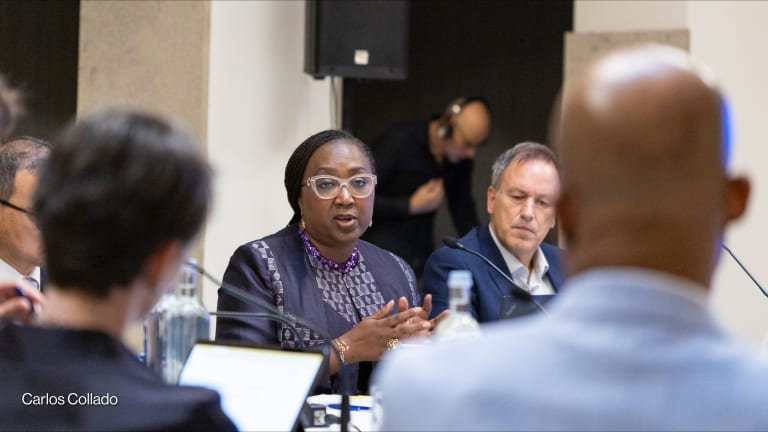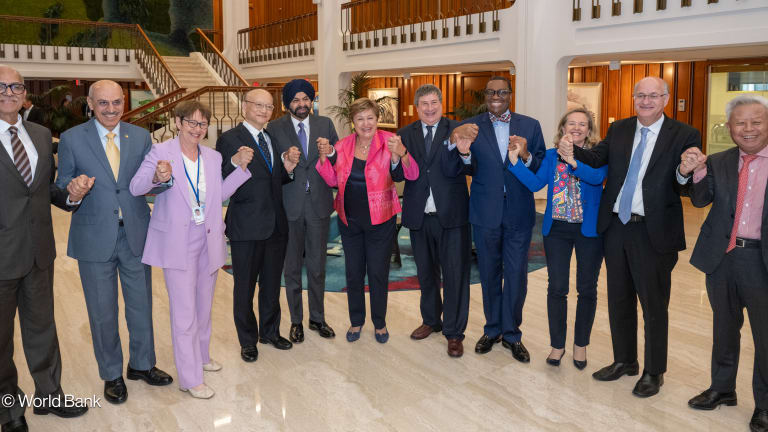
It will be next to impossible to achieve the Sustainable Development Goals, which call for gender equality, an end to hunger, and dramatic reductions in maternal, infant, and child mortality, malaria, HIV, and tuberculosis, without wide-scale behavior change, the adoption of new social norms, and structural shifts in policy and implementation.
The good news: Across the globe, practitioners in the field known as social and behavior change communication, or SBCC, are already tackling challenges like these and are well-equipped to help the world move mountains in a systematic way fundamental to achieving the SDGs.
The COVID-19 pandemic clearly illustrated how central SBCC is to our well-being. From encouraging new social norms such as mask-wearing and distancing to helping people overcome vaccine hesitancy, we saw in real-time how SBCC helped mitigate the impact of COVID-19.
Over 1,800 SBCC practitioners and like-minded individuals from more than 80 countries will be gathering in Marrakech, Morocco, from Dec. 5 - 9 for the International Social and Behavior Change Communication Summit. They will be there to discuss and debate issues of urgency such as climate action; health and gender; leveraging the opportunities of the digital world; and engaging effectively in collaborative networks and partnerships for greater impact and resource utilization.
We will look at what’s working and what’s not, what’s new and what we can learn from one another across disciplines. What the SBCC community needs — and what the summit will provide — is a deeper appreciation among donors and others in the development space of how essential SBCC is to achieving the SDGs, along with the investment required to finance the work.
Looking at the SDGs and related indicators provides further insight into the critical role of SBCC. Many of the SDGs require behavior change across the system, from the household to the community, from local services up through policy shifts at the national level.
Take SDG 6, Clean Water and Sanitation, and specifically target 6.2: “By 2030, achieve access to adequate and equitable sanitation and hygiene for all and end open defecation, paying special attention to the needs of women and girls and those in vulnerable situations.” The indicator description is: “Proportion of population using safely managed sanitation services, including a handwashing facility with soap and water.”
“What the SBCC community needs ... is a deeper appreciation among donors and others in the development space of how essential SBCC is to achieving the SDGs.”
—If we look at this goal, we can see that individual, community, organizational, and policy action is needed. The behaviors in SDG 6.2 are complex: Individuals and households must be aware of the need for handwashing and sanitation practices, have the correct knowledge to implement the behaviors and believe that there is value in the practice.
Communication here is key: People need to understand why and how often they should wash their hands. They need to know how to treat and store water safely in their homes. They need ways to ask any questions they have about the process — and to get timely and easy-to-understand answers. They need to know how to advocate with the government and other stakeholders to ensure the right to access clean water and proper sanitation facilities is fulfilled.
At the community level, collective action is critical for establishing and managing hygiene practices, such as providing all community members access to a clean water source or building latrines to minimize open defecation.
Community members need to express their needs and what will work for them, practically and culturally. How will latrine use become a social and community norm — despite potential barriers such as gender and age customs or maintenance? SBCC is critical to spark these conversations and inspire action through a collective response.
In addition to reaching households and communities to build awareness and skills and increase the capacity to act and change social norms, there may be a need for policy changes at the local or national level in order to ensure the sustainability of infrastructure. This requires advocacy — communicating with those in power, and organizing communities for social action to ensure their right to have their basic needs met.
Similar SBCC approaches will be needed to reach SDG targets related to gender, family planning and other areas of health and development. Again, fundamental to achieving these goals are both social norm and structural change.
Reducing gender-based violence against women and girls, for example, will require changing patriarchal norms — making clear that such violence is unacceptable — along with strong legal sanctions and community services where victims can seek support.
For family planning, communication work needs to be done to make the use of modern contraception an acceptable practice. Depending on the situation, it may matter whether a woman’s husband or family finds it acceptable. It may matter what a local religious leader has to say. It may matter whether other women in the community are using it. Understanding what the barriers to social and behavior change is essential to developing systematic ways to address those barriers.
SBCC isn’t a one-size-fits-all proposition. How families, communities, organizations, and governments make choices about health, education or the environment varies by country, even by community. Each issue and each community may need a tailored communication approach.
This is why choosing the right communication approaches is paramount to the success of the SDGs. We need to fully utilize SBCC’s power to address barriers to health, gender equity, education, and the other SDGs and advocate to change policies that keep people from living their best lives.
Lasting change — the kind of change that will enable us to reach those ambitious SDGs — requires long-term investment in a field that often doesn’t get enough credit for the role it plays in improving peoples’ lives around the globe. It’s time for that to change, too.









